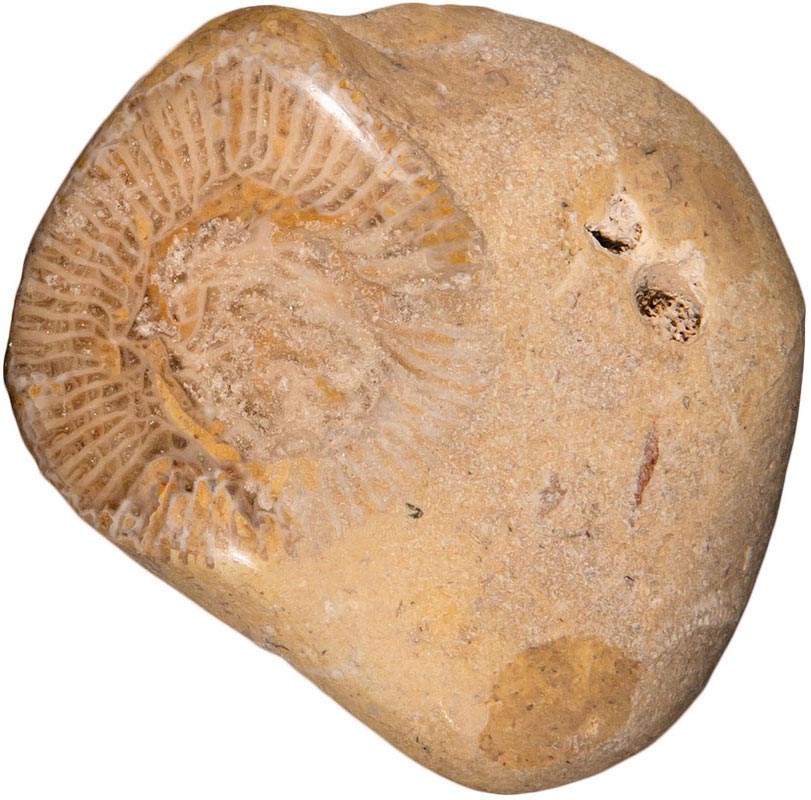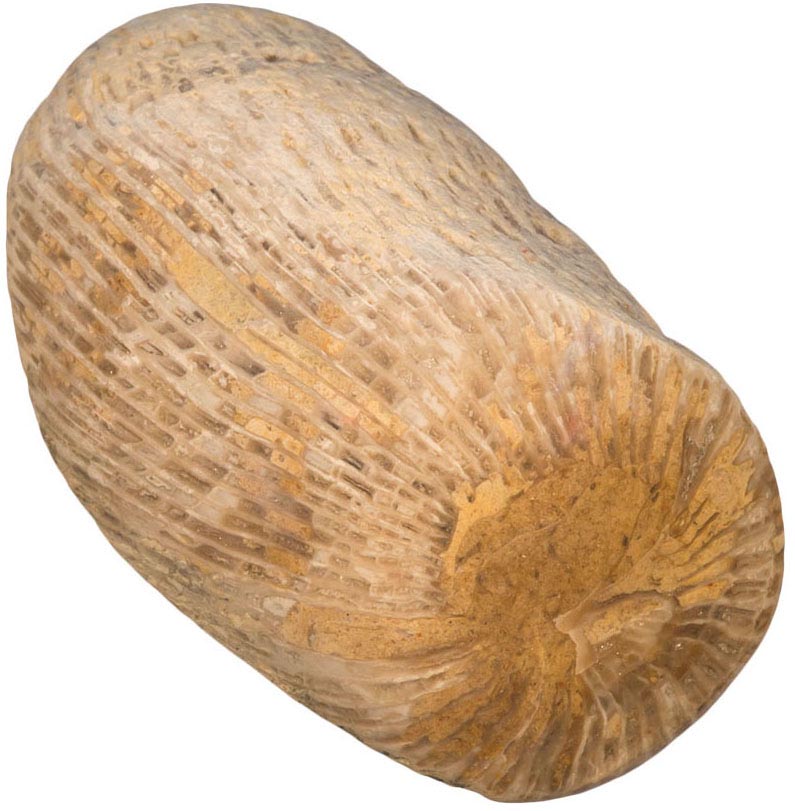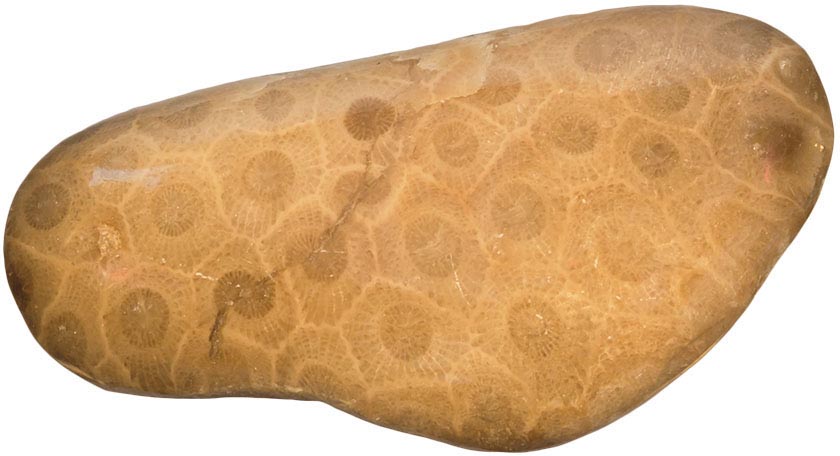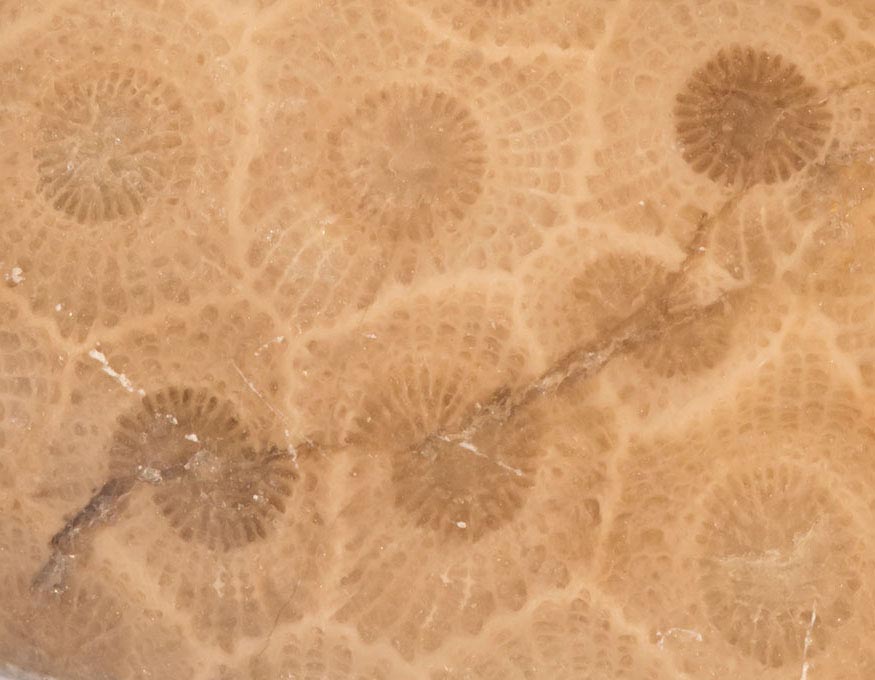
Getting nicely polished Petoskey stones doesn’t require expensive equipment, and great results can be achieved by hand with nothing more than sandpaper. Hand-sanding Petoskey stones works best on specimens that have already been shaped and rounded by wind and waves, as their smooth surfaces will be easier to work with. Dry or wet sandpaper may be used, but whatever your choice, the stone itself should be wetted before sanding. Begin by starting with fairly coarse sandpaper—from 100 to 220 grit—and grind down the surface of a specimen until it is uniform, being careful to go over any deep scratches or pits extensively. This first step is the most important, as it will determine how well-shaped and smoothed the stone will be when you’re finished, so take your time—it will be a slow process, taking anywhere from 30 minutes to a couple of hours, depending on the size of your stone and how rough it was to begin with. Rinse the stone often to eliminate coarse grains that may continually scratch the stone.
Once you feel that the stone is sufficiently sanded, proceed to use finer and finer sandpaper—400 and then 600 grit—to repeat the process several times. As you progress to finer sandpaper, the overall appearance of the sanded area should become smoother and details within the stone should become clearer. You can perform as many intermediate steps as you wish, but in general, the higher the final grit number you use, the better the final polish. To achieve the finest possible polish, you can even use a polishing compound, which contains an ultra-fine grit. These powders or pastes are usually applied to a piece of heavy fabric, like velvet.


Horn corals polish up just as well as Petoskey stones.
Specimen courtesy of Dean Montour
Polishing can reveal interesting details that would remain hidden otherwise. This specimen shows that it was once broken when still within the Earth, and the pressure of burial moved the two broken pieces slightly. Later, when a calcite solution filled the crack and crystallized, “healing” the stone, this slight jog in the pattern was preserved.


A close-up to show the detail of the slightly misaligned patterning that resulted from the stone breaking at some point long ago. Collectors call this a fault.